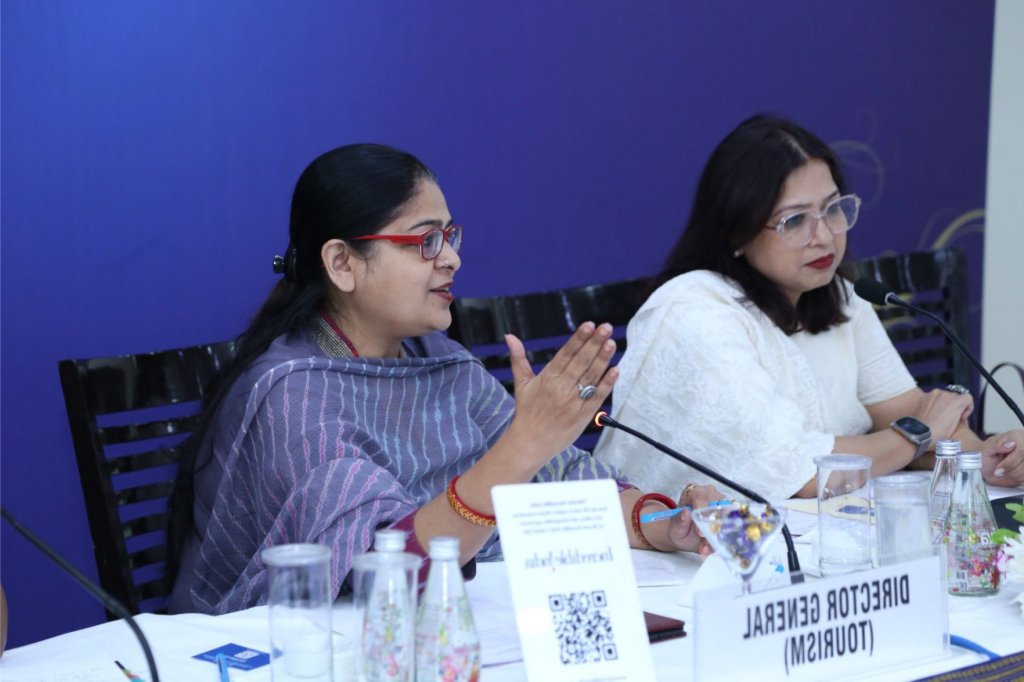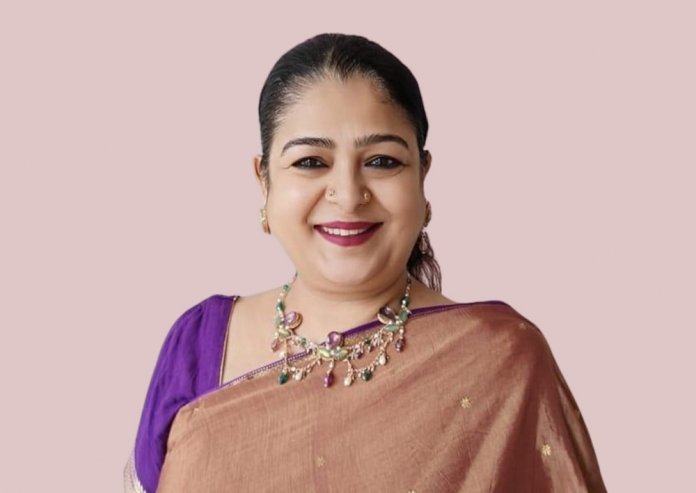TMS. As you step into the significant role of Director General of the Ministry of Tourism, Gov. of India, can you share your initial thoughts on the state of India’s tourism sector and outline your vision and immediate priorities for advancing tourism in the country?
Mugdha Sinha. I consider myself fortunate in many ways as I move from Culture (social sector) to Tourism (industry), as both are conjoined at the hip and have much to learn from and offer to each other. Also, the fact that immediately on my joining, quite by serendipity I was thrust into the pre decided series of Zonal Meetings of the State Tourism Ministers Meetings, which proved to be a Pan India orientation with less than a month into the job. this has given me not just a macro picture of the aspirations and priorities of the Ministry of Tourism at the Country level but also afforded me a sneak peek into a more nuanced understanding of the micro level undertakings, achievements, issues and policy interventions at the State level. In the recent past, 2019 was in many ways our best year for Tourism. However, we are only beginning to emerge from the post Covid impact, the recovery is slow but steady.
Only the Middle East has managed to enhance its tourist footfalls beyond the pre Covid markers, by a long term and futuristic vision. Post Covid, there is a boom in domestic tourism, but the same cannot be said of the FTA’s which stand a little over 9million. Therefore, a need to custom build for the FTA’s; diversify our tourism products- re look our promising destinations and products and create more novel potential alternate destinations and intangible experiences, some targeting also our huge global Indian Diaspora.
Travel is a two way education:to learn about the world as also to know your own self
Building more targeted itineraries, circuits keeping distance, time, taste and overall visitor ease and experience in mind, as also improving our infrastructure and accessibility, while ensuring value for money and price competitiveness is a non negotiable, as is safety and hygiene. The tourism ecosystem, market, technology and tastes are all changing and a pro active study and outreach to the global trends using date for evidence based policy interventions and marketing will remain on top priority to make India Tourism ready for the changing land and mind scape.
TMS. From your perspective, what are the most compelling aspects of Indian culture that should be promoted to international tourists, and how can tourism initiatives effectively showcase these elements?
Mugdha Sinha. Tourism pillion rides on culture, and culture needs tourism to amplify its tangible heritage in terms of monuments and museums and its intangible repository of fairs, festivals, arts, crafts and gastronomy. Moreover, tourism is as much about places as it is about people, just like culture is about nurturing nature.

India is fortunate to be both rich and diverse in its built heritage of Palaces, Forts, Temples, Stupas, Rock Paintings, Petroglyphs, Museums and cultural offerings of visual, performative and arts, literature, crafts and textiles marked by antiquity of traditions and modernity of ideation befitting for the consumeristic west and the contemporary millennials and Gen Z. Given its sheer size, its natural landscape of long coastlines, snow capped mountain peaks, sand dunes, transparent lakes, wildlife sanctuaries, bio diverse rich mangroves, blue flag beaches, waterfalls, deserts offer an immense scope for eco and adventure tourism. Overall, India has the best of bespoke products for the FOMO as well as JOMO traveller.
TMS. India boasts numerous UNESCO World Heritage Sites and culturally significant landmarks. As someone deeply experienced in governance and cultural sectors, how do you view the role of these sites in shaping India’s tourism identity, and what makes them particularly important in the context of global cultural heritage?
Mugdha Sinha. India has 44 UNESCO World Heritage sites with the Charaideo Moidoms – the burial sites of the Ahoms in Sivasagar district of Assam being the latest entry. Apart from these we have 3679 ASI protected sites in India, with States also having several State protected monuments. Together they provide a remarkable legacy of India’s built heritage. Moreover, we have three different types of temple styles – Nagara, Dravida and Vesara which are premised on architectural principles enshrined in the manuscripts like the Manasshilpasastra, a book that inspired Vitruvius’ book on Architecture.
The Monuments are symbolic of our intellectual legacy, artistic traditions and technical prowess. Without the scaffolds of machines and technology, it is amazing to even think of how the Kailash Temple at Ellora was built from top down or the magnificent sculptures that adorn our temples in Khajuraho or the frescos of Ajanta and Ellora or the Brick Temple of Bhitargoan has survived the vagaries of time and weather.
Or the formidable Forts of Rajasthan, Madhya Pradesh and Maharashtra, the opulent palaces and open air scientific Jantar Mantar, are testimony to India’s all round development in arts, science and technology. It is this sheer legacy of antiquity and unique artistry that dots our landscape, which become promising destinations that attract tourist footfalls to India.
It is around these sites that one can by providing modern amenities for better mobility build a superstructure of potential alternate tourism products, encashing on the high demand for these UNESCO sites. In fact, a whole lot of cultural offerings -literary festivals, temple dance festivals, musical evenings, fairs and festivals piggy back on these sites, giving India a special place in tourist itinerary- where the sacred and profane co exist. As Martin Luther King said, “To other countries I may go as a tourist, but to India, I come as a pilgrim.”
TMS. The MICE industry is a significant driver of tourism. How do you envision the MICE sector contributing to the overall growth and development of India’s tourism industry?
Mugdha Sinha. Our rich cultural heritage and offerings have given us a special identity and a head start with India attracting close to 10 million foreign tourist arrivals, of which 45% are leisure tourists. However, in the post covid scenarios and with more and more people travelling on business, it is important to convert the business traveller into a serendipity traveller it is necessary to also look at the MICE sector, as an enabler for -repeat tourism, with longer stays, and more spends. Moreover, MICE tourism has the potential to catapult the way we do tourism, as it demands way more professionalism in terms of world class infrastructure that improves ease of doing business and quality of travel and stay.
In concrete terms the domino impact of bulk bookings in terms of economics and employment will also have a transformative effect on goodwill generation, creating a congenial perception of India commensurate with its aspiration to be a 5 trillion dollar economy, with 10X times more FTAs. MICE can make India roar if we use convergence as an Archimedes lever as a win a win situation for all our eighty plus Ministries and make each one of them attract an international conference or event in India. India’s Presidency of the G20 is a case in point.
















